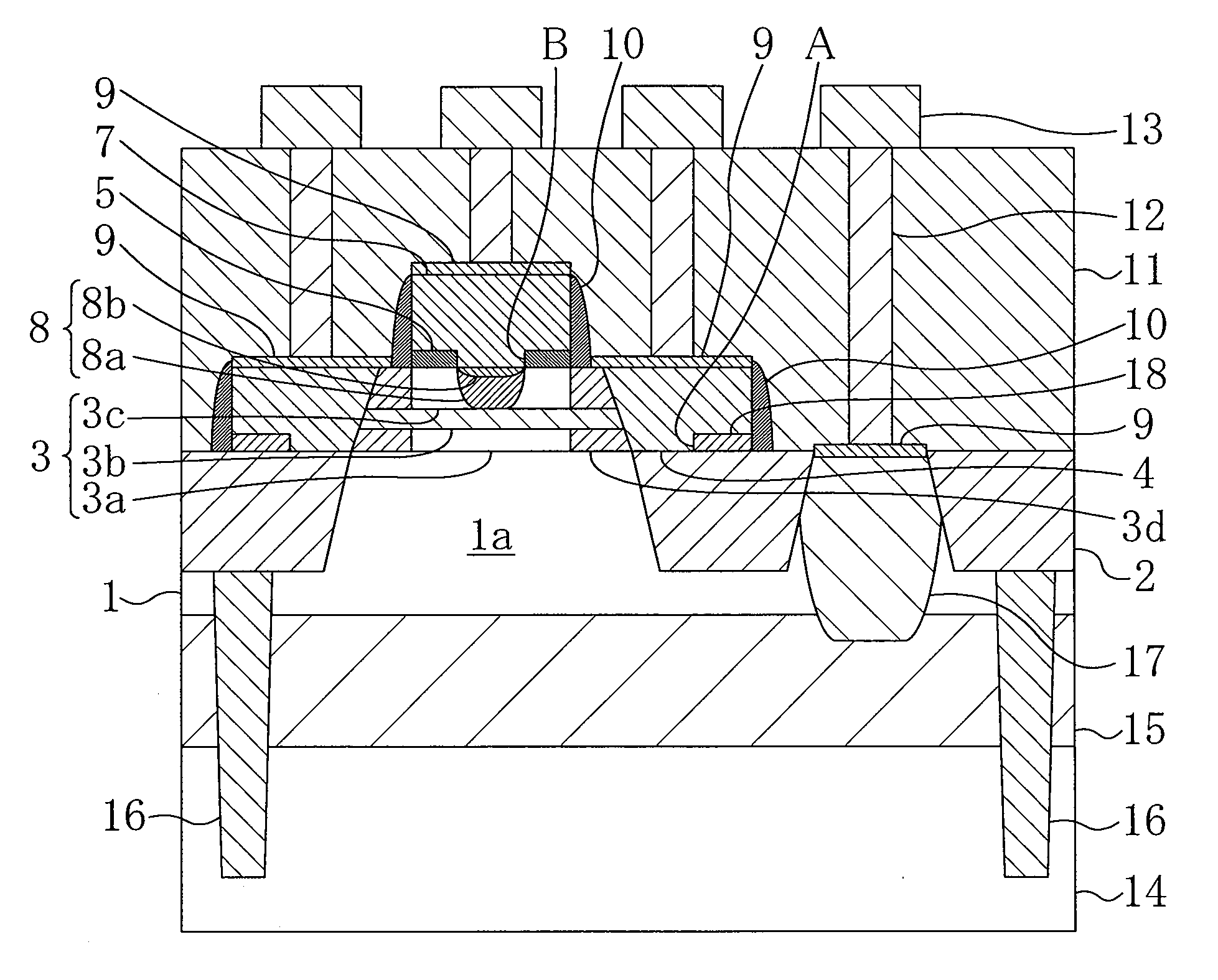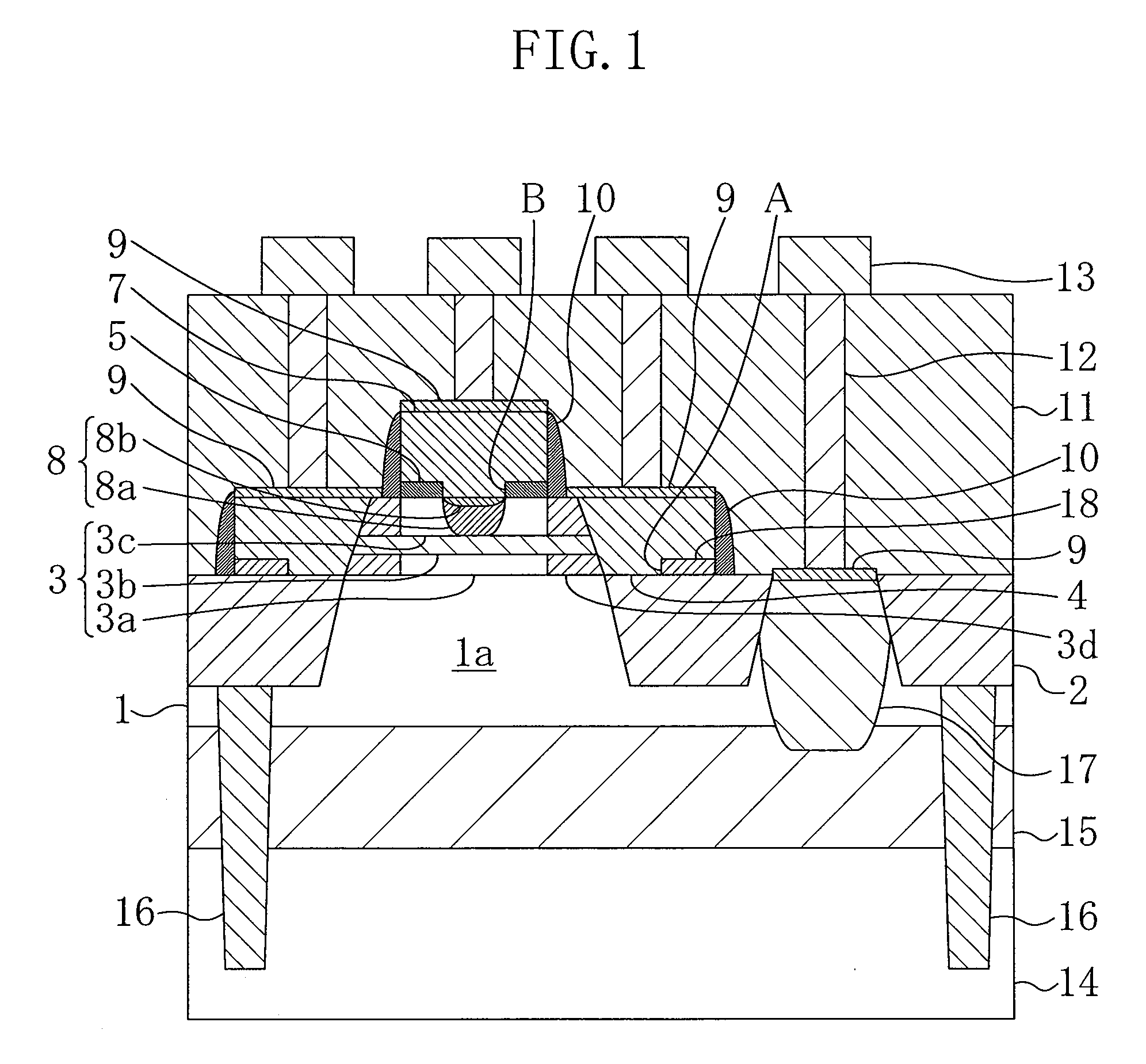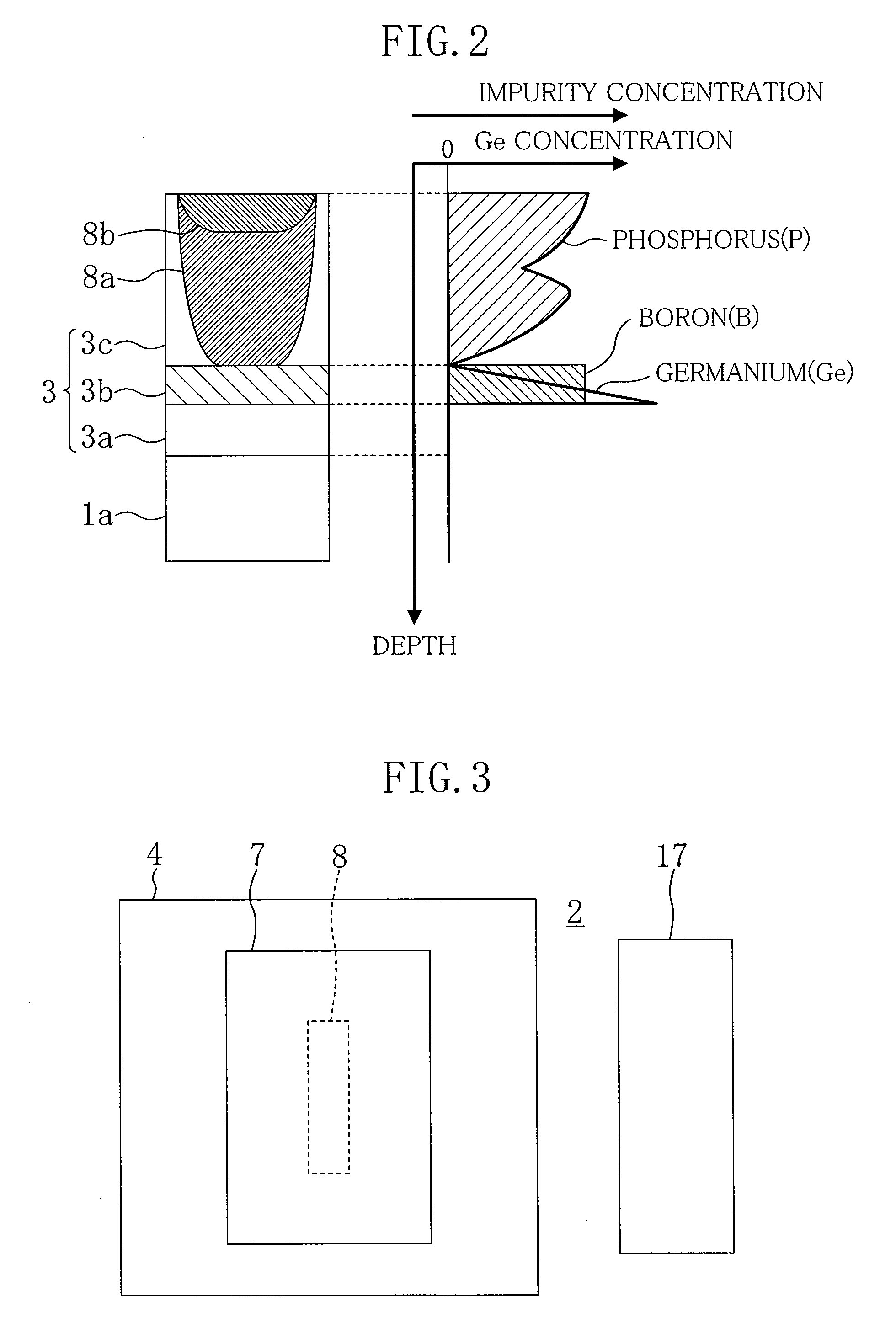Semiconductor device
a technology of semiconductors and devices, applied in the direction of semiconductor devices, electrical equipment, transistors, etc., to achieve the effects of stable silicide layer, excellent high frequency characteristics, and stable base contact resistan
- Summary
- Abstract
- Description
- Claims
- Application Information
AI Technical Summary
Benefits of technology
Problems solved by technology
Method used
Image
Examples
first example embodiment
[0045]A first example embodiment of the present disclosure will be described with reference to the drawings.
[0046]A first example semiconductor device has a relatively thick Si-Cap layer constituting an intrinsic base layer; and an emitter layer formed in the intrinsic base layer which includes a lower emitter region having a deep junction formed by ion implantation, and an upper emitter region having a shallow junction formed by impurity diffusion (solid phase diffusion) from an emitter electrode.
[0047]FIG. 1 shows the sectional structure of a SiGe heterojunction bipolar transistor (SiGe-HBT) as the first example semiconductor device.
[0048]As shown in FIG. 1, an N+-type impurity layer 15 which is a buried layer of about 500 nm in thickness formed on an upper portion of a P-type silicon (Si) semiconductor substrate 14. An N−-type epitaxial layer 1 of about 400 mn in thickness is formed on the N+-type impurity layer 15.
[0049]In the N−-type epitaxial layer, 1 first isolation regions (...
second example embodiment
[0084]A second example embodiment of the present invention will be described below with reference to the drawings.
[0085]A second example semiconductor device includes, in addition to the same double-layer emitter layer 8 as that of the first example semiconductor device, a retrograde collector region formed in part of the collector layer 1a below the emitter layer 8.
[0086]FIG. 6 shows the sectional structure of a SiGe heterojunction bipolar transistor (SiGe-HBT) as the second example semiconductor device. In FIG. 6, the same components as those shown in FIG. 1 are indicated by the same reference numerals to omit the explanation of them.
[0087]As shown in FIG. 6, the second example SiGe-HBT includes an N-type retrograde collector region 19 formed in part of the collector layer 1a below the emitter layer 8.
[0088]A method for manufacturing the retrograde collector region 19, which is a feature of the second example embodiment, will be explained below with reference to the drawings.
[0089...
PUM
 Login to View More
Login to View More Abstract
Description
Claims
Application Information
 Login to View More
Login to View More - R&D
- Intellectual Property
- Life Sciences
- Materials
- Tech Scout
- Unparalleled Data Quality
- Higher Quality Content
- 60% Fewer Hallucinations
Browse by: Latest US Patents, China's latest patents, Technical Efficacy Thesaurus, Application Domain, Technology Topic, Popular Technical Reports.
© 2025 PatSnap. All rights reserved.Legal|Privacy policy|Modern Slavery Act Transparency Statement|Sitemap|About US| Contact US: help@patsnap.com



